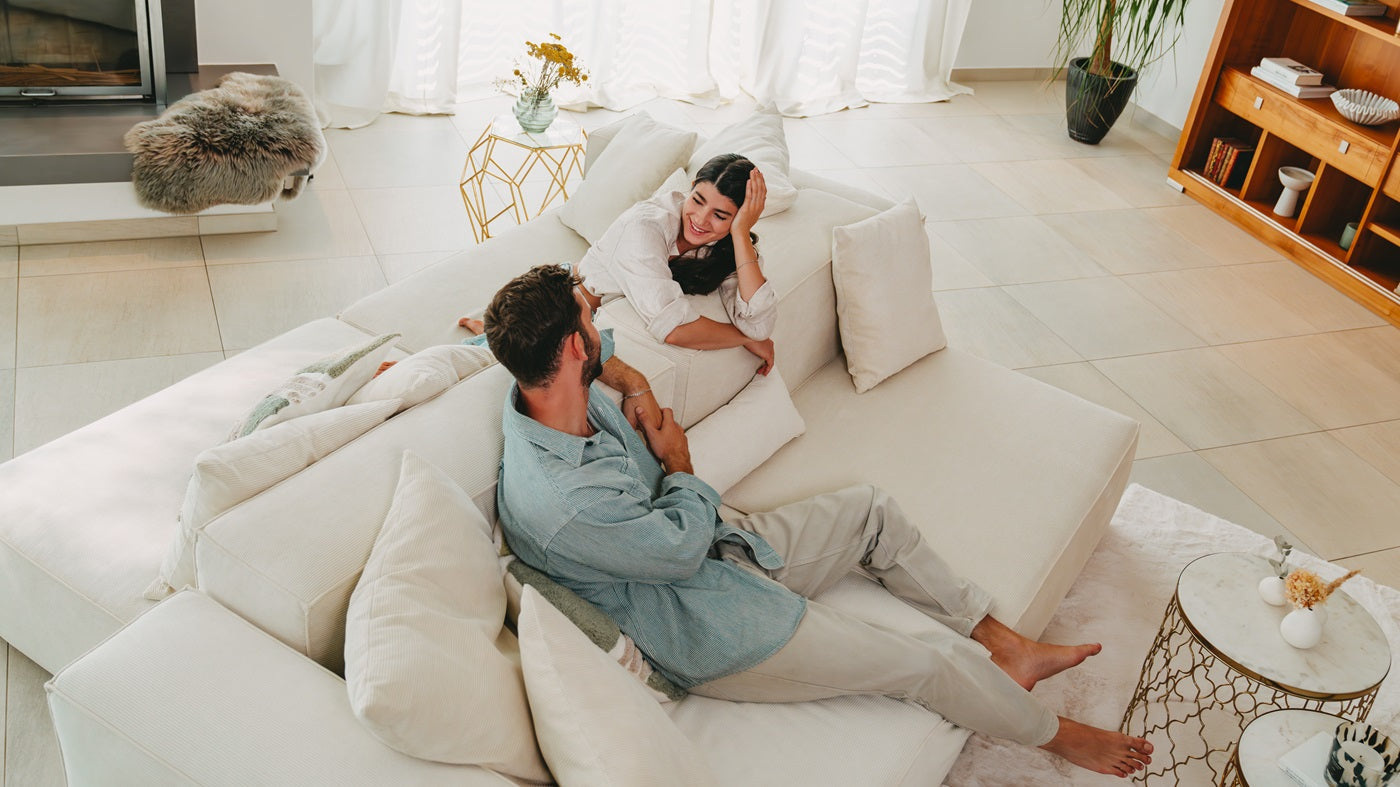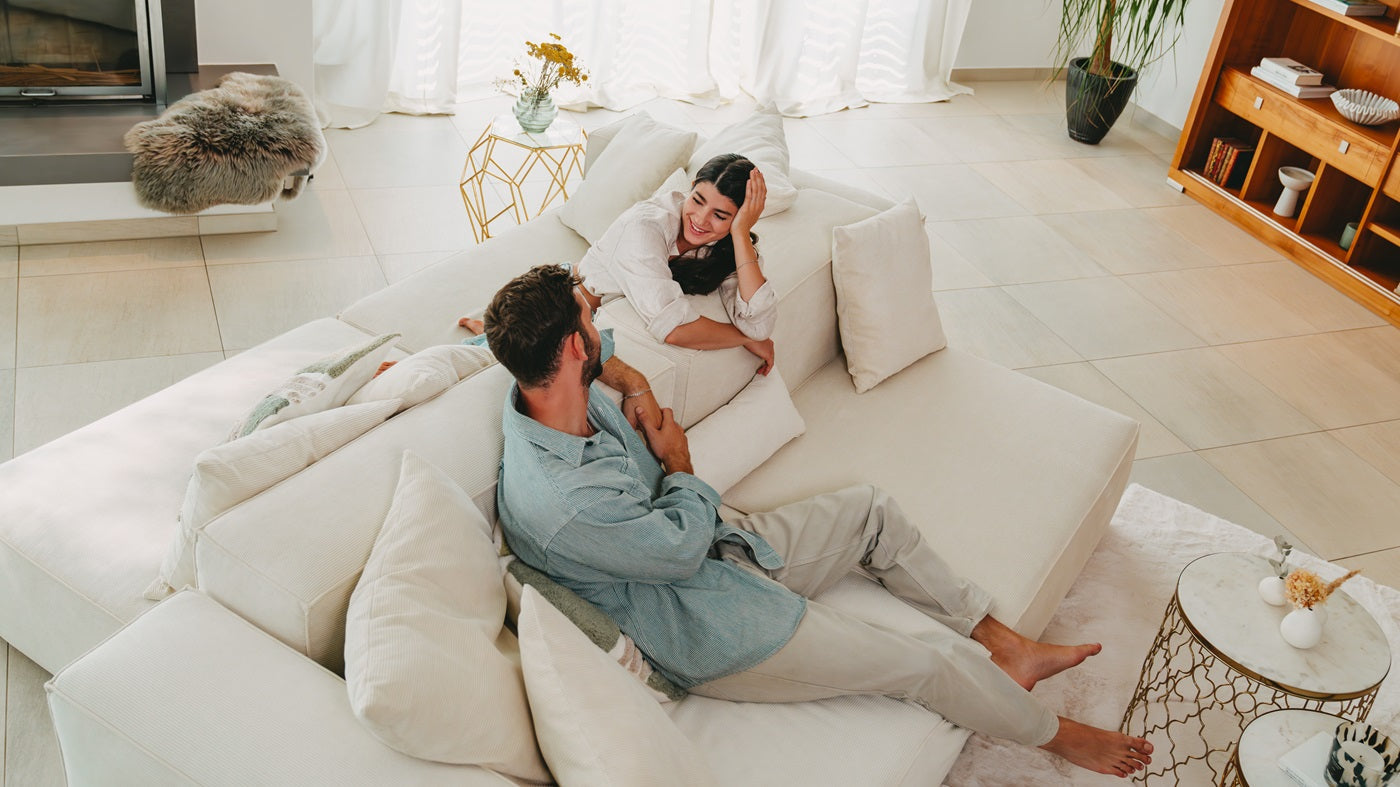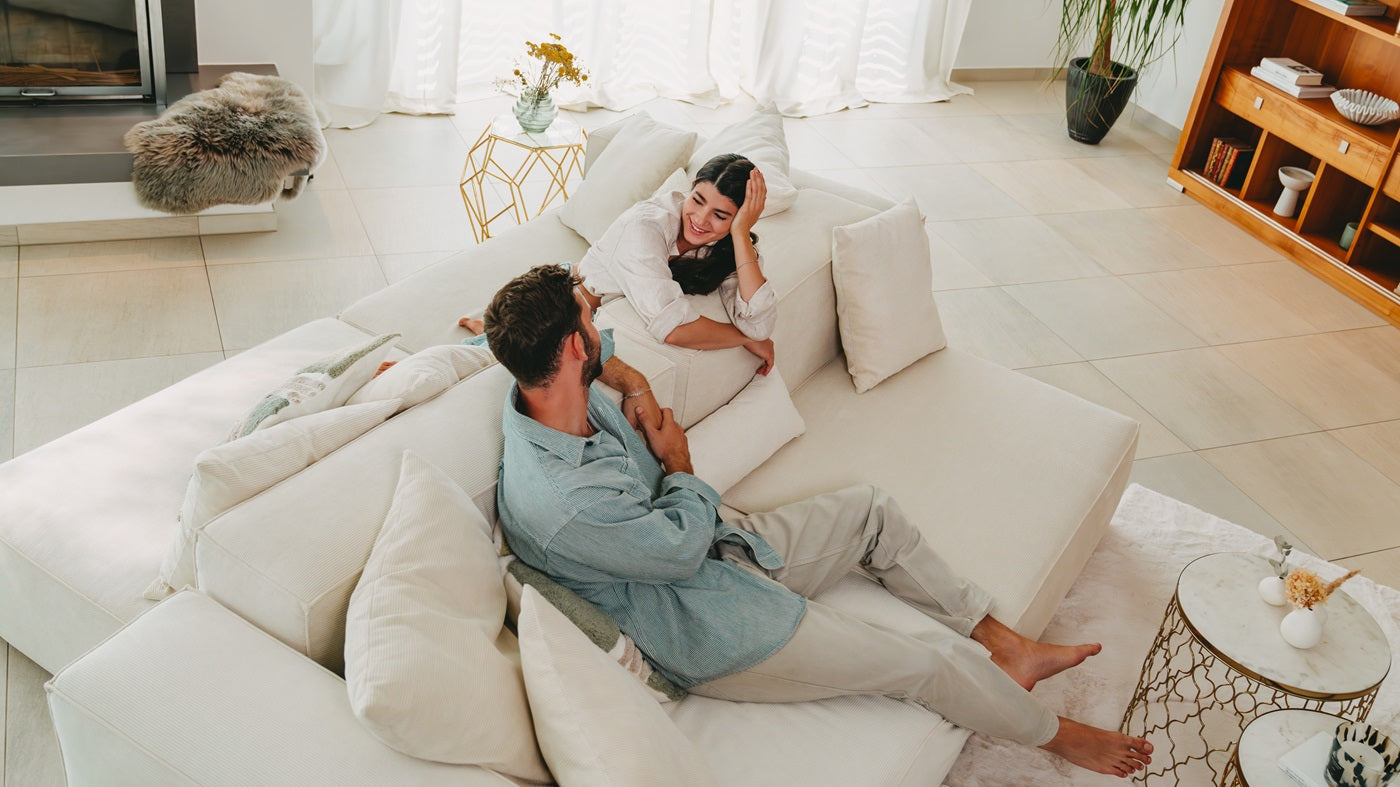Welcome to our article on how to keep your living room cool despite the heat! On hot summer days, it can be a challenge to maintain a comfortable room temperature in your own four walls. But don't worry, with a few simple tips and tricks, you can keep the heat outside and create a cool living environment.
The Importance of a Cool Living Atmosphere
Before we delve into practical cooling tips, we'd first like to emphasize the importance of a cool living environment. Not only is it more pleasant to stay in a cool room, but a cool living room also offers health benefits.
A pleasant room temperature has a positive effect on our well work. Especially on hot days, a cool room can help cool the body and reduce the risk of overheating or heatstroke. A cooler environment allows us to concentrate better and make our daily lives more productive.
Health benefits of a cool living room
A cool room can not only help protect our bodies from the effects of heat but also improve our sleep. A pleasant room temperature ensures relaxing nights and allows us to wake up refreshed and energized the next day.
Moreover, a cool living environment has positive effects on our health. It can reduce the risk of respiratory diseases, as fewer bacteria and viruses can multiply in a cool room. Furthermore, a pleasant room temperature improves blood circulation and can relieve muscle tension.
Improving the quality of life through pleasant room temperatures
A cool living room can also improve your quality of life. Too warm a room can lead to irritability, discomfort, and difficulty concentrating. By keeping your living room cool, you can create a pleasant environment where you can relax and feel good.
Not only you, but also your furniture and electrical appliances benefit from a cool living environment. High temperatures can damage wooden furniture, electronics, and other sensitive items. By cooling properly, you can extend the life of your furniture and avoid potential repair costs.
Fancy a breath of fresh air in your living room? Check out our modular sofas with washable and changeable covers:
Understand the heat sources in your living room
Before you can take the right cooling measures, it is important to understand the heat sources in your living room.
Another important factor preventing your living room from overheating is room insulation. Poor insulation makes it easier for heat to enter the room from outside, causing the room temperature to rise. Therefore, check your windows and doors for leaks and repair them if necessary.
Sun exposure and its effects on room temperature
One of the main causes of high room temperatures is direct sunlight. The sun heats rooms through windows and creates a greenhouse effect. It's therefore important to control this heat source by using curtains, blinds, or sunscreen.
Moreover, placing plants in front of windows can help reduce solar radiation. Plants not only absorb some of the sun's energy but also create a pleasant atmosphere in the room.
Electronic devices as hidden heat sources
You might be surprised to learn that electronic devices like televisions, computers, and lamps also contribute to room temperature. Even if your heat output is lower compared to sunlight, you can still help warm up your living room. Be sure to turn these devices off when not in use and minimize their use on hot days.
Another factor to consider is the sources of waste heat in your living room. A fireplace, for example, not only creates a cozy atmosphere but also releases heat. Ensure the fireplace is properly sealed when not in use to prevent heat loss.
Practical tips for cooling your living room
Now we come to the practical tips on how to keep your living room cool.
Optimal use of curtains and blinds
Curtains and blinds are effective ways to reduce sunlight. Choose light-opening curtains or blinds to minimize sunlight penetration. Close them during the hottest hours of the day to keep the heat out.
To enhance the effect of curtains and blinds, you can also consider choosing reflective materials. These can better deflect the sun's rays and further reduce the temperature in the living room.
Another tip is to place curtains and blinds not only at the windows, but also at doors or other entrances to the living room. This prevents warm air from penetrating from outside and increases the room temperature.
Use of fans and air conditioning systems
Fans and air conditioners can be extremely helpful in keeping your living room cool. Use a ceiling fan or stand fan to improve air circulation. If you have air conditioning, make sure it's well-maintained and working efficiently.
There are several types of fans you can use in your living room. Besides stand fans and ceiling fans, there are also table fans and tower fans. Each of these fans has its own advantages and can help lower the room temperature.
When it comes to air conditioning systems, it's important to clean or replace the filters regularly to ensure optimal cooling performance. You should also ensure the air conditioning system is properly sized to cool the room efficiently.
The role of houseplants in room cooling
Did you know that houseplants can also help cool a room? Certain plants, like ferns and rubber trees, have a natural cooling effect. Place them strategically in your living room to benefit from their cooling effect.
Besides their cooling effect, houseplants can also increase humidity and improve air quality. This can be particularly beneficial during the summer months when the air is dry and room temperatures are high.
To enhance the cooling effect of houseplants, you can also place a bowl of water under them. The air is also cooled by the evaporation of the water.
It is important to maintain and water houseplants regularly to ensure they remain healthy and have their cooling effect.
Energy-efficient methods for room cooling
In addition to the practical tips, there are also some energy-efficient methods to keep your living room cool.
There are several ways to keep your living room cool in an energy-efficient way. Here are some additional tips:
Investing in energy-efficient appliances
Energy-efficient appliances like air conditioners or fans can help reduce energy consumption while still providing effective room cooling. When purchasing, check the energy label and choose appliances with a good energy efficiency rating.
Today, there are several energy-efficient air conditioning systems and fans on the market. These appliances are specifically designed to lower room temperatures without consuming too much energy. Because of their high energy efficiency rating, you can not only save money but also reduce your carbon footprint.
The importance of insulation and insulation
Good insulation and insulation in your living room can help keep the heat out. Check that your windows and doors are well insulated and that there are no leaks that could allow warm air to escape. Good insulation is important not only for cooling the room but also for the energy efficiency of your home.
The insulation and insulation of your living room plays a crucial role in maintaining a comfortable room temperature. Effective insulation can keep heat out while simultaneously reducing energy consumption. Regularly check that your windows and doors are properly insulated and check for leaks that could allow warm air to pass through. By sealing these areas, you can minimize energy loss and thus improve the cooling of the room.
Conclusion: a cool living room even in summer
In summary, it's possible to keep your living room cool despite the heat. From controlling sunlight to using fans and air conditioning to optimize energy efficiency, there are many measures you can take. A cool living room not only improves your quality of life but also has long-term benefits for your health and energy consumption. Try our tips and enjoy a cool summer in your own oasis of well-being!

Now I'd like to give you some additional information to deepen your understanding of how to cool your living room in the summer. There are several types of sun protection you can use to reduce sunlight in your living room. One option is to install blinds or shutters on the windows. You can help reduce sunlight penetration and thus lower the room temperature.
Another important aspect is choosing the right colors for your living room. Bright colors reflect sunlight better than dark colors, which means the room temperature can be kept cooler. Therefore, we recommend getting a replacement sofa cover in a lighter color during the summer. Also consider removing light-colored walls to create a cooler atmosphere.
Besides controlling sunlight, proper ventilation is also crucial for keeping your living room cool. You can use fans to improve air circulation and create a pleasant breeze. Alternatively, you can install air conditioning to effectively lower the room temperature.
Another way to optimize the energy efficiency of your living room is to use energy-efficient appliances. Pay attention to the energy label when purchasing electrical appliances such as televisions, computers, and lamps. Appliances with a high energy-efficiency rating consume less electricity and therefore contribute to reducing your energy consumption.
To make your living room even cooler, you can also rely on natural materials. For example, use cotton or linen fabrics for your curtains and furniture. These materials are breathable and help dissipate heat.
In summary, there are many ways to keep your living room cool in the summer. There are countless measures you can take, from controlling sunlight to using fans and air conditioning, optimizing energy efficiency, and using natural materials. By following these tips, you can not only create a comfortable room temperature but also reduce your energy consumption, thus achieving long-term benefits for your health and the environment. So what are you waiting for? Turn your living room into a cool oasis of well-being and enjoy summer to the fullest!





